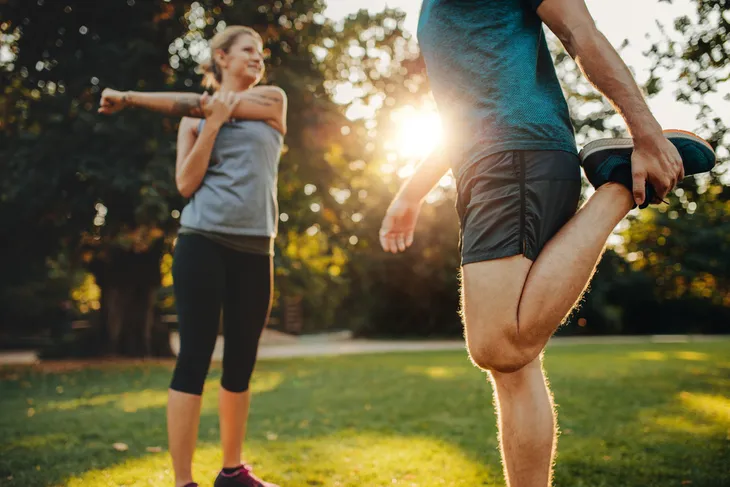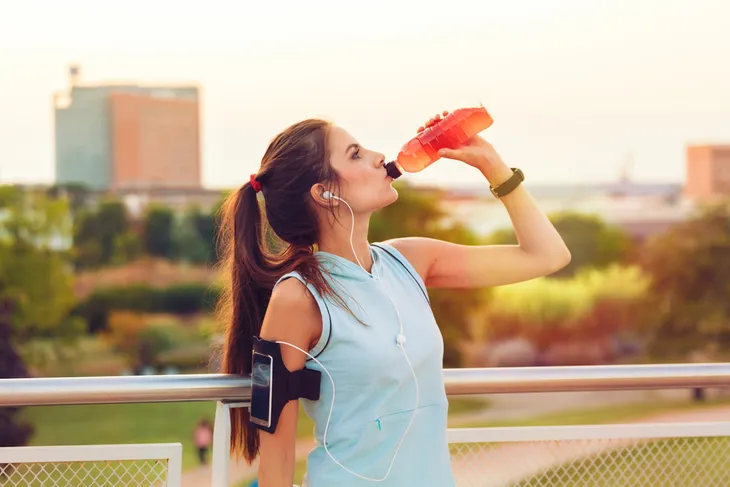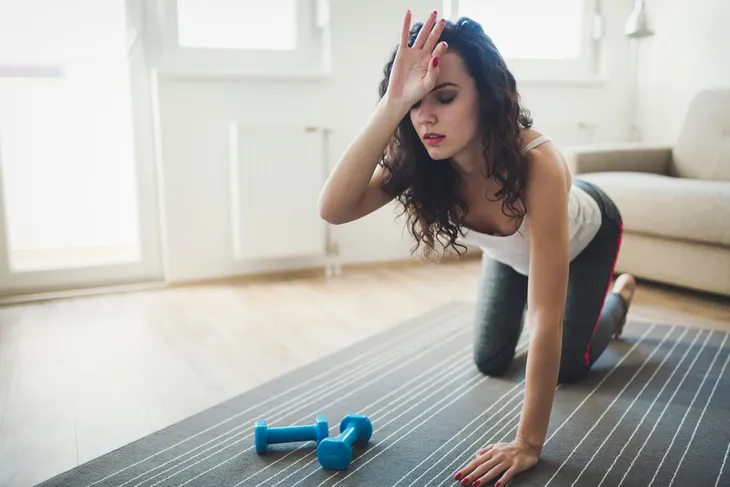You’re half way through a vigorous 5-mile stretch when suddenly without a warning a leg cramp or side stitch sabotages your mojo. Workout cramps typically strike in 3 variations
- Side Stitches – You can’t ignore a side stitch when a sudden pang of pain strikes either side or your lower abdominals. These cramps typically result from shallow breathing while exercising or an electrolyte imbalance.
- Muscle Cramps – Most typically occur in the legs due to dehydration.
- Lower Abdominal Cramps – Usually the result of shallow breathing, electrolyte imbalance, or over-eating/drinking.
Luckily, you can do your part to prevent pain from cramping your workout…
Don’t Overeat
The most obvious cause of stomach cramps is overeating or too much fluids taken in before a workout. There’s a fine balance of fuel and fluid intake necessary to supply the energy you need to workout. However, excessive fluid or food rolling around undigested in your stomach can obstruct breathing, forcing to you to take shallow instead of deep breaths when you need them most, causing the inevitable upset stomach and cramping. To avoid stomach cramping, eat a light snack 2 to 3 hours prior to working out in order to allow for proper digestion.
Avoid High Fiber Snacks
Exercise cramps can also occur depending on what you eat prior to working out. And everyone is different. For instance, if I eat a high-fiber snack before my workout (even if I leave 3 hours between eating and exercise), I know I will end up with a stomach cramp, which is why I stick to easily digestible simple carbs (i.e., an apple or banana).
Balance Carbs and Proteins
In addition to a quick-digesting carbohydrate (i.e., fruits like apples, peaches, or bananas), for energy, I like to pair them with a light, lean protein (i.e., 6 raw almonds or a tablespoon of almond butter) to adequately fuel my workout and prevent cramping.
Adequate Hydration
Thirst is another quick route to workout cramps, particularly side stitches. However, while it’s important to stay hydrated, again, too much water—either drank before or during exercise—can leave you with stomach cramps. Generally, a vigorous run will demand about an ounce of water for every 10 pounds of body weight prior to working out, in addition to an added 2 ounces every 15-minutes during your workout. Just make sure you take in the majority of that water a few hours before you workout.
Warm Up Your Body
Muscle cramps, especially leg cramps, can also occur mid-workout if your muscles aren’t adequately warmed up. This is why a brief 3 to 5 minute warm-up (i.e., skipping, running on the spot, or jumping jacks) will safely accelerate your pulse and ready your muscles for more vigorous exercise.
Top Up Electrolytes
If your workouts are vigorous, they may demand a little more than simple fuel and water for energy. Those who do a lot of endurance or marathon training can be prone to muscle cramps due to an electrolyte imbalance (or off kilter of sodium, calcium, and potassium levels). If you perform endurance-style training, take a sports drink along for sipping or eating a banana prior to exercise.
Stop and Stretch
Whatever you do, if you get a pain or cramp during exercise, don’t force your body to run through the pain. Instead, slow the pace down to a light jog or brisk walk while you breathe deeply and massage your side or lower stomach. I find that taking a slower pace and applying massage can help relax the cramping muscle and instantly relieve the stitch.
Listen To Your Body
If a muscle cramp plagues your workout, don’t ignore it! Listen to your body and consider a cramp a warning sign that something isn’t quite right. Take it seriously and cease exercise, to let your body rest, hydrate, stretch, and top up electrolytes if needed.











